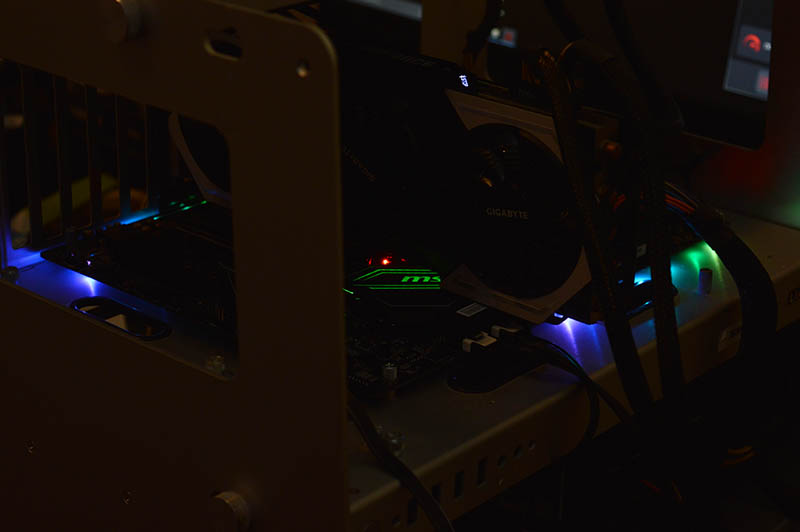MSI Z270 GAMING PRO CARBON LGA1151 Review
John Williamson / 7 years ago
A Closer Look
As its name suggests, the Z270 GAMING PRO CARBON revolves around an understated jet black theme with carbon fibre inspired accents. The carbon fibre detailing is implemented in a subtle manner which combines with the imposing heatsinks to create an elegant appearance. Additionally, the neutral colour scheme allows you to add a more flamboyant touch via the Mystic Light RGB technology. Of course, this isn’t mandatory and you can turn off the lighting to maintain a less spectacular finish. Personally, I adore the carbon fibre effect and believe it compliments the black PCB rather nicely. Also, the large I/O cover and attractive MSI branding are pleasing to the eye and help to give the motherboard its own unique identity. The sleek lines positioned on the heatsinks enhance the aesthetic appeal even further and have a similar hue to the stainless shielding which features prominently around the motherboard.
To take full advantage of the buyer’s cooling hardware, MSI opted for 6 4-pin fan headers supporting hysteresis. As a result, the fans operate within a smooth curve which makes RPM adjustments fairly difficult to detect. Thankfully, any fans attached to the motherboard can be controlled in the BIOS or MSI’s Gaming App. Not only that, there’s a dedicated fan header for powerful water pumps up to 2A. This header is a handy addition to proficiently control the pump’s speed and balance the noise levels between the pump and fans more efficiently. The header is positioned in an easily accessible spot to route the pump cable neatly.
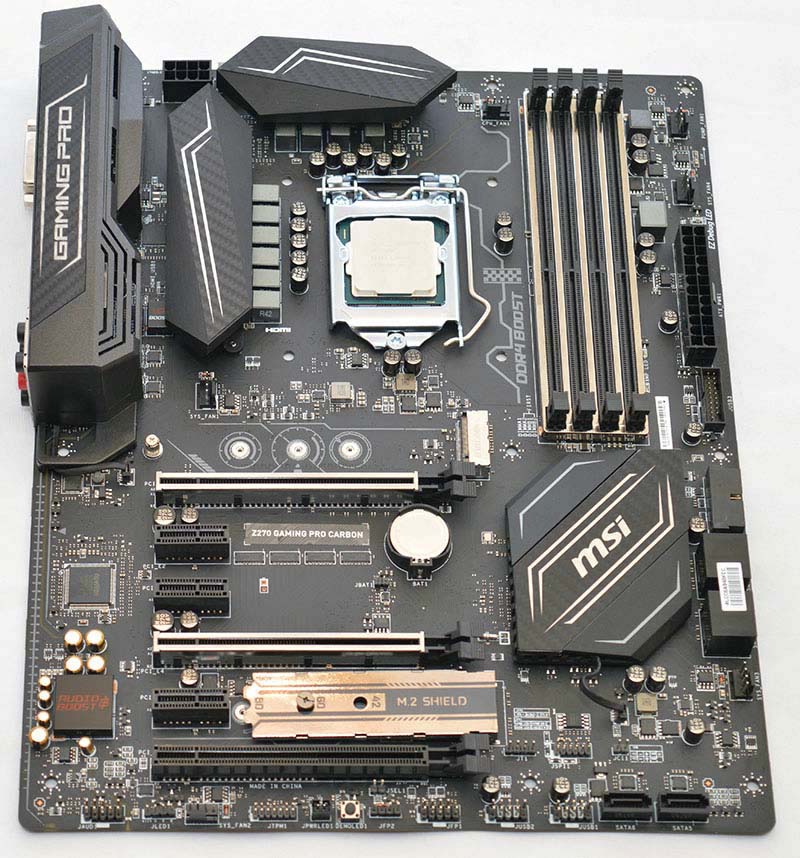
The MSI Z270 GAMING PRO CARBON utilises an 11-phase power delivery which is more than ample to overclock the i7-7700K to the absolute limit. Furthermore, the motherboard employs titanium chokes which can run at 220 degrees Celsius and have a 40% higher current capacity than the industry standard. The chokes’ impressive thermal tolerance provides better stability and power efficiency. The motherboard’s 10K-rated dark capacitors are extremely reliable and should last a long time. On another note, the PCB has double layer grounding which surrounds the mounting holes and protects against surges. As a result, the likelihood of damage occurring during installation is dramatically reduced. Another interesting extra is the VR Boost chip placed next to the motherboard’s MOSFETs. This intriguing creation boosts the signal over a USB port to prevent a performance drop. In theory, this creates a lag-free experience with less jitter.
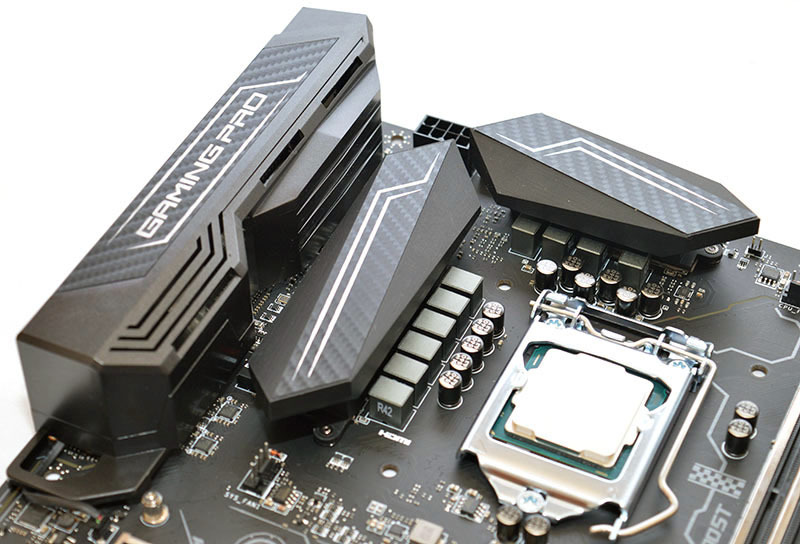
As you might expect, the motherboard can accommodate high-frequency DIMMs up to 3800MHz. Even though Kaby Lake’s official memory support ends at 2400MHz, it’s remarkably simple to enable a memory’s kits XMP profile and dial-in faster speeds. Interestingly, MSI’s DDR4 Boost opts for a cleaner signal on optimised traces and a fully isolated memory circuitry. This allows for a more consistent memory signal and enhanced stability. MSI invests a great deal of time testing pretty much every popular memory vendor’s products. Apparently, the company has assessed a staggering 489 memory kits and certified them to use in the entire Z270 motherboard range.
The DIMM slots are reinforced by sturdy stainless steel metal shielding which protects against physical damage due to improper installation and electrical overcurrent through extra ground points. Additionally, the Steel Armor creates a cleaner signal and protects memory modules from being affected by electromagnetic interference.
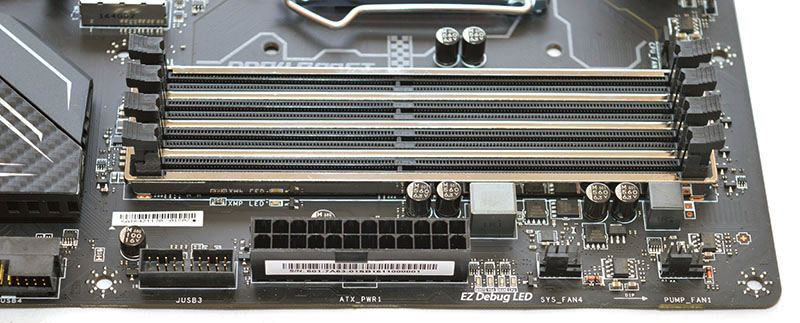
The motherboard’s audio solution is based on the Realtek ALC1220 codec and has an EMI cover. Not only that, the left and right channels are placed on separate PCBs to reduce EMI. The isolated circuit design works alongside premium Japanese Chemicon capacitors to provide a rich, warm sound output. Rather impressively, the isolated audio design is the world’s first to support RGB technology, creating a really distinctive look. The audio chipset utilises de-pop protection circuitry and is capable of a 120dB signal-to-noise ratio.
MSI housed an Asmedia 2142 USB 3.1 Gen2 controller offering 10Gb/s bandwidth. The MSI Lightning USB technology allows you to connect multiple devices and take the performance to another level using the XBOOST storage software. According to MSI, it’s possible to exceed a rate beyond 1000MB/s which is actually more than Thunderbolt USB 3.1 Gen2. In terms of graphics support, the motherboard can cope with 2-way SLI and 3-way CrossfireX configurations in the form of x8/x8 and x8/x4/x4. As you can see, the top two slots are fortified by metal shielding which protects against EMI and flexing. Also, the Steel Armor has reinforced, soldered connections, making the fixture point remarkably strong. Even the M.2 port is covered in a steel shielding which demonstrates MSI’s attention-to-detail.
Another innovative inclusion is the M.2 shield which consists of a thermal pad and metal heat shield. Once installed, the M.2 shield prevents high-end NVMe drives from thermal throttling and helps to maintain a more consistent read/write rate during demanding applications. Honestly, this is possibly the most inventive creation I’ve encountered in the motherboard market for some time and MSI deserves a lot of credit for developing it.
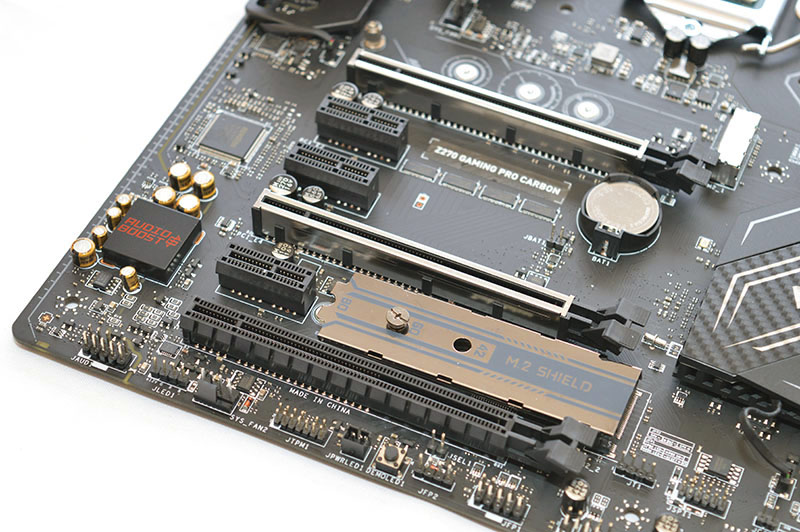
Connectivity-wise, the motherboard has six SATA3 ports and two M.2 ports. The primary M.2 port supports type 2242/2260/2280/22110 while the second allows you to install type 2242/2260/2280. Of course, it’s possible to pair two M.2 x4 drives together in an RAID0 configuration and achieve unbelievable read/write speeds. As previously mentioned, there’s no SATA Express, U.2 or Thunderbolt 3 on this particular model.
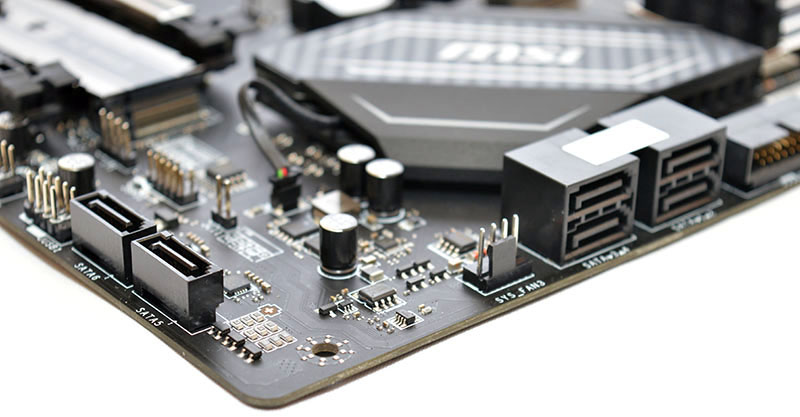
Here we can see the PCH is partially covered by an attractive carbon fibre decal which contrasts with the matte black sections in a beautiful manner.

The rear I/O contains a PS/2 combo port, two USB 2.0 Type-A, DVI-D, USB 3.1 Gen2 Type-A, USB 3.1 Gen2 Type-C, four USB 3.1 Gen1 Type-A, HDMI, Intel i219V Gigabit LAN, 5 OFC audio jacks and S/PDIF Out.

MSI’s Mystic Light technology allows you to overhaul the motherboard’s appearance and inject a hint of colour. Whether you want to simply select your favourite hue or enable a flashy transitional effect, the motherboard has you covered. The rear I/O cover’s lettering illuminates as does the PCH and audio isolation trace. Not only that, you can attach a 12V RGB LED strip to a dedicated header and control it using MSI’s software suite.
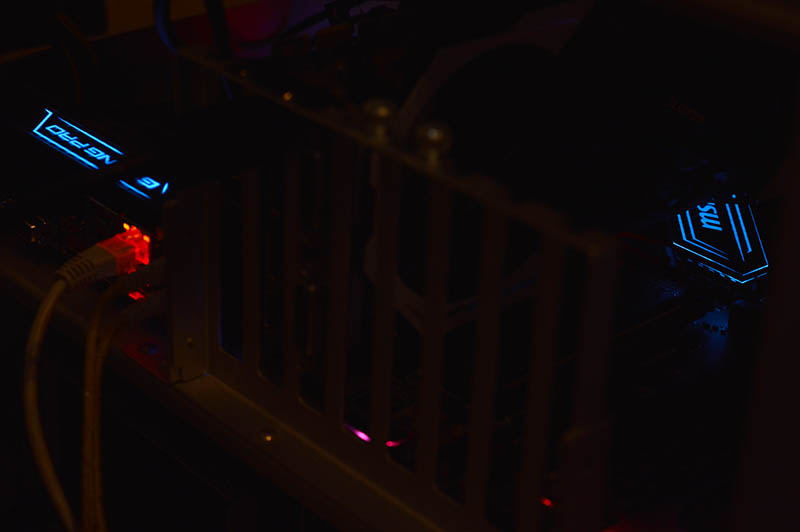
Here we can see the motherboard utilising the rainbow effect which looks amazing from every angle and completely changes the product’s style.
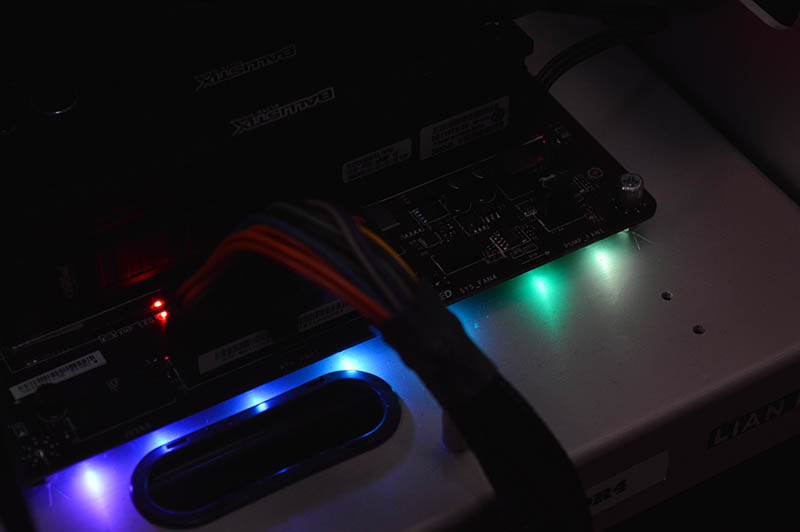
From a wider angle, it’s clear that the lighting is extremely vivid and covers all the key areas. I particularly like how the light emanates below the PCB around the memory section.
